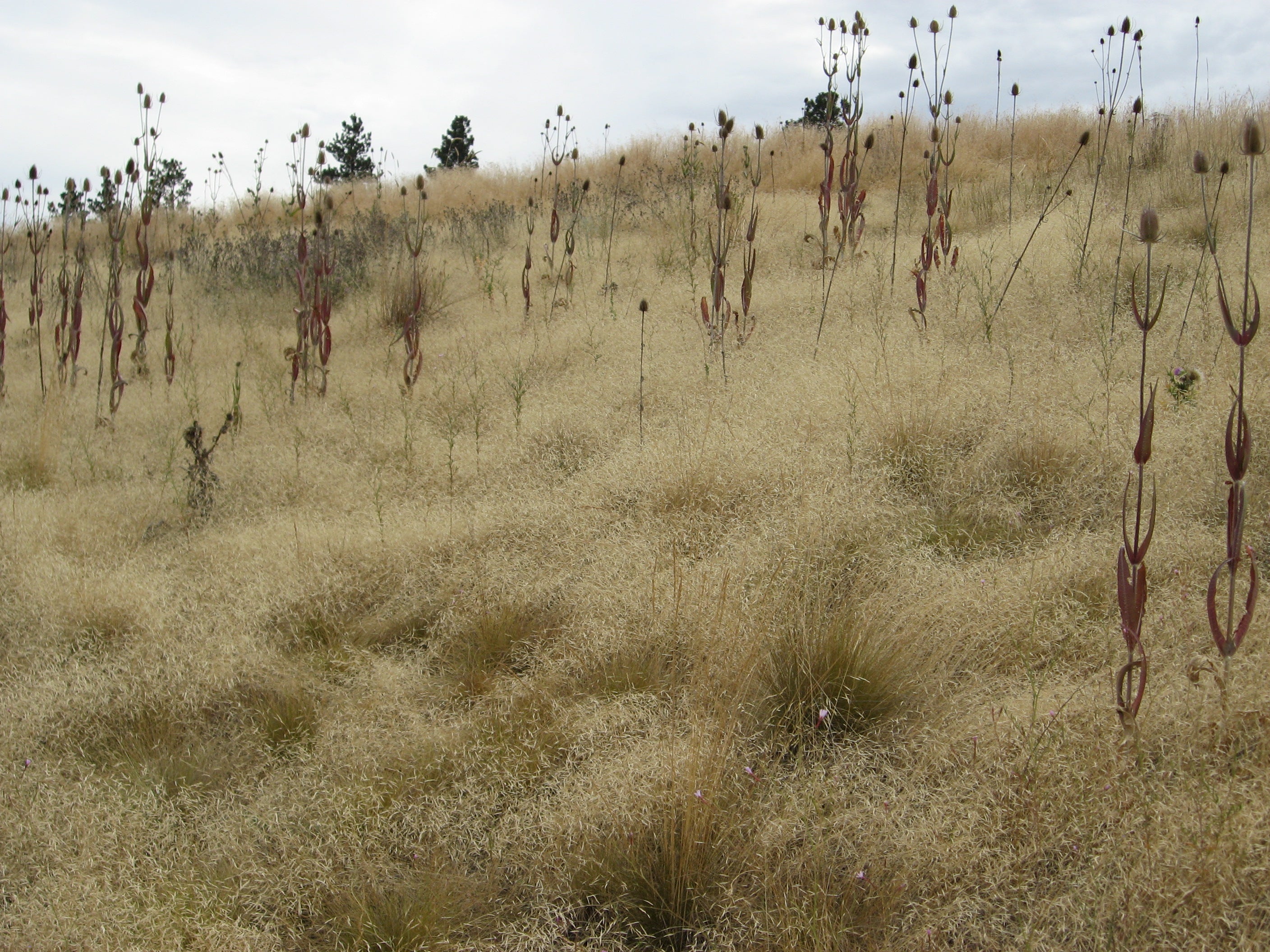
At a glance, Ventenata dubia, or wiregrass, might strike the viewer as pretty with its pale golden color. However, this invasive species grows in dense stands and poses an enormous threat to natural ecosystems in the U.S. Originating in Eurasia and Northern Africa, the annual, self-pollinating grass was first discovered and documented in Washington state in 1952. Since then, it has spread to eight states in the western U.S.
Wiregrass’ aggressive nature causes harm in several ways, such as increasing the frequency and intensity of wildfires, and choking out the food sources needed by animal species such as sage grouse.
This species also harms farmers by contaminating and depreciating the value of their crops such as Timothy Grass (a hay variety) and Kentucky Bluegrass seeds.
“Agriculture is still the main driver of Idaho’s economy and any weed that would be harmful to seed production and crop values certainly is a big concern to Idaho Farm Bureau,” said Sean Ellis, spokesman for the Idaho Farm Bureau Federation. “Farmers produce food on thin margins and anything that could eat away at those margins could have a major impact on farmers’ bottom lines.”
Fortunately, Stephen Novak, a professor in Boise State’s Department of Biological Sciences, is on the case.
Novak uses the plant’s DNA sequences (or genetic markers) to shed light on the invasive grasses in western North America. In addition, this research assesses the role of evolution to the successful establishment and expansion of invasive populations in new lands. To do this, Novak melds the adventure of field research with the thrill of the biology lab.

“Invasive plants in the western U.S., especially invasive grasses, have had devastating ecological consequences and enormous economic costs,” said Novak. “Thus, there is an urgent need to better understand the invasion process. Combining field work to collect population samples with laboratory genetic analyses contributes to this goal.”

Novak and his colleagues recently published a paper in the journal Biological Invasions which describes the introduction and spread of wiregrass in the western U.S. Collaborators included fellow Boise State authors Inna Pervukhina-Smith (MS, biology, ’19) James Smith, a professor of biology, researchers from the European Biological Control Laboratory in southern France (Rene Sforza), and the Biotechnology and Biological Control Agency in Rome (Massimo Cristofaro).
In this study, Novak and his colleagues investigated 51 invasive populations of wiregrass across eight western states. The team collected and sampled individuals from these populations between 2014 and 2016, as well as utilizing data from herbarium databases such as the Consortium of Pacific Northwest Herbaria and the Global Biodiversity Information Facility.
From these samples, the team analyzed the plant’s genetics to reconstruct how this species was introduced into this region, how it spread, and the genetic diversity within each population. The team discovered that wiregrass in the western U.S. exhibited low levels of genetic diversity within populations but had high genetic differentiation among populations.

“The level and structure of genetic diversity within and among invasive populations of wiregrass has been influenced by the introduction of these plants from their native range. In addition, their highly self-pollinating mating system contributes to this pattern. Yet, low levels of genetic diversity have clearly not limited the invasion of wiregrass across this region,” said Novak.
Results of the study will allow researchers, land managers, and policy makers to better understand the invasion of wiregrass and develop management strategies to control this destructive invasive grass species.
-By Brianne Phillips